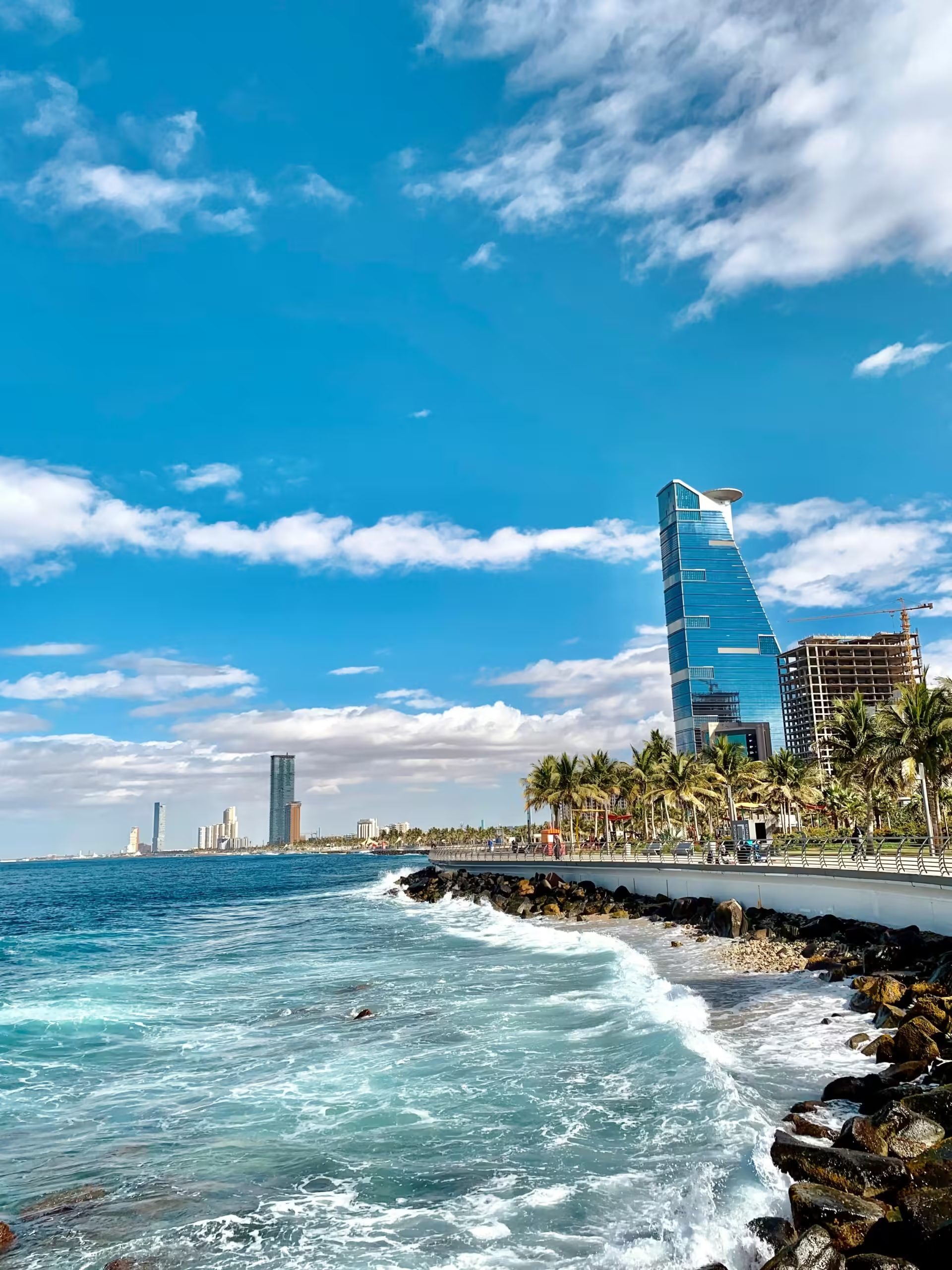Jeddah in Saudi Arabia
Jeddah in Saudi Arabia: A City of Heritage, Hospitality, and Horizons
Situated along the Red Sea coast, Jeddah in Saudi Arabia is a city that blends deep cultural roots with modern ambition. Known as the “Gateway to Mecca,” it plays a vital role during the Hajj season, welcoming pilgrims from around the world. Yet beyond its religious significance, Jeddah offers a vibrant mix of history, architecture, art, and coastal charm that makes it a compelling destination for all travellers.
A City Shaped by Centuries
Jeddah’s history spans more than 2,500 years. Originally a modest fishing village, it grew into a major trading port due to its strategic location on the Red Sea. Merchants and pilgrims arrived by boat, bringing with them diverse cultures and traditions that shaped the city’s identity.
The historic district of Al-Balad stands as a testament to this rich past. Recognised as a UNESCO World Heritage Site, Al-Balad features coral-stone buildings, narrow alleyways, and centuries-old mosques. Exploring this area offers a glimpse into Saudi heritage, with each corner revealing stories of trade, faith, and community.
Al-Balad
Al-Balad is a must-visit for anyone interested in history and architecture. Dating back to the 7th century, the district showcases the traditional Hijazi style, with wooden balconies and intricately designed facades. Landmarks such as Nassif House and Shafi’i Mosque provide insight into life in Jeddah during earlier times.
Walking through Al-Balad’s cobbled streets feels like stepping into a living museum. Local shops, art galleries, and cafés now occupy many of the restored buildings, creating a space where heritage and contemporary culture coexist.
Where Tradition Meets Innovation
Jeddah in Saudi Arabia is a city that embraces both its past and its future. While Al-Balad preserves historical charm, the city’s skyline reflects its modern aspirations. The Jeddah Corniche, a scenic waterfront promenade, stretches along the coast with parks, sculptures, and views of the Red Sea.
Families gather here for walks, picnics, and leisure activities. Public art installations add vibrancy to the space, making it one of the most engaging urban areas in the country. The planned Jeddah Tower, set to become the tallest building in the world, symbolises the city’s forward-thinking spirit and architectural ambition.
The Red Sea’s Influence
Jeddah’s location on the Red Sea shapes its culture, economy, and lifestyle. The clear waters and thriving marine life attract divers and snorkellers from around the world. Coral reefs, colourful fish, and even dolphins can be spotted during guided excursions offered by local tour operators.
The sea also plays a central role in the city’s cuisine. Fresh seafood features prominently in many dishes, with grilled fish, prawns, and crab served in restaurants along the waterfront. Dining by the sea allows visitors to enjoy the flavours of the region while taking in the coastal views.
A Diverse and Welcoming Community
Jeddah’s long-standing role as a hub for pilgrims and traders has created a diverse and inclusive atmosphere. People from across Africa, South Asia, and the Middle East have settled here, contributing to the city’s cultural richness.
This diversity is reflected in the architecture, festivals, and food. Traditional Saudi dishes such as kabsa are served alongside meals inspired by Indian, African, and East Asian cuisines. Whether you’re sampling street food or dining in a fine restaurant, the culinary scene in Jeddah offers something for every taste.
Celebrating Art and Culture
Jeddah in Saudi Arabia is widely recognised as a cultural centre. Public art is a prominent feature, with sculptures and installations brightening streets and parks. The Jeddah Corniche alone hosts over 300 artworks, making it one of the largest open-air galleries in the world.
The city also supports creative expression through galleries, cultural centres, and events. The Red Sea International Film Festival, for example, showcases local and international talent, promoting storytelling and cinematic innovation. These initiatives reflect Jeddah’s commitment to nurturing the arts and engaging with global culture.
Hospitality and Everyday Life
Hospitality is a cornerstone of life in Jeddah. Visitors often experience warm welcomes, with locals eager to share Arabic coffee, dates, and conversation. This openness creates a sense of belonging and makes the city feel accessible and friendly.
Traditional customs are still observed, but they coexist with modern lifestyles. Cafés, shopping centres, and entertainment venues offer contemporary experiences, while cultural practices continue to shape daily interactions.
Shopping in Jeddah: Souks and Modern Malls
Jeddah’s shopping scene combines the charm of traditional markets with the convenience of modern retail. The Red Sea Mall and Mall of Arabia cater to those seeking international brands and luxury goods. Meanwhile, Souk Al Alawi in Al-Balad offers a more traditional experience.
Here, visitors can browse stalls filled with spices, textiles, jewellery, and antiques. The atmosphere is lively and engaging, with vendors sharing stories and offering insights into their products. Exploring these markets provides a deeper understanding of local culture and commerce.
Final Reflections on Jeddah in Saudi Arabia
Jeddah in Saudi Arabia is a city of contrasts and connections. It honours its historical roots while embracing innovation, creating a space where tradition and progress coexist. From ancient architecture to modern skyscrapers, from coral reefs to cultural festivals, Jeddah offers a wide range of experiences.
Visitors are welcomed with warmth and invited to explore the city’s many layers. Whether diving in the Red Sea, wandering through Al-Balad, or enjoying a meal with new friends, the journey through Jeddah is both enriching and memorable.
As Saudi Arabia continues to open its doors to the world, Jeddah stands as a shining example of the kingdom’s heritage, creativity, and hospitality.

